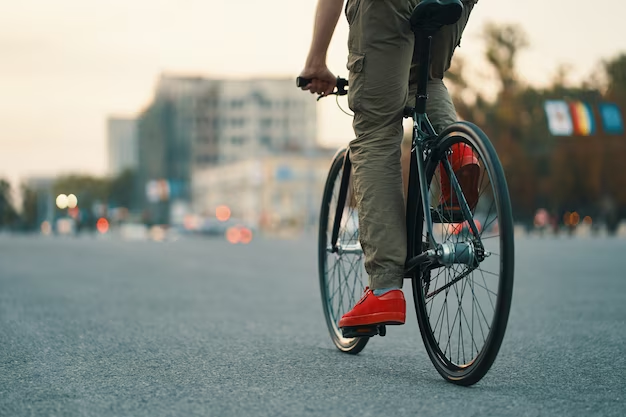Bike Safety 101: Crucial Guidelines Every Cyclist Should Know

Cycling is not only an excellent form of exercise but also an eco-friendly mode of transportation. Whether you’re a seasoned cyclist or just starting out, prioritizing safety is paramount. With roads becoming increasingly congested, it’s essential for cyclists to be proactive in ensuring their safety and the safety of others. In this comprehensive guide, we’ll delve into crucial guidelines every cyclist should know to stay safe on the roads.
Understanding the Risks
Before we delve into safety guidelines, it’s crucial to understand the risks associated with cycling. According to the World Health Organization (WHO), road traffic injuries are the leading cause of death among children and young adults aged 5-29 years. Cyclists, in particular, are vulnerable road users, facing risks such as collisions with vehicles, falls, and crashes due to road conditions.
Despite these risks, cycling offers numerous benefits, including improved cardiovascular health, reduced carbon emissions, and cost-effectiveness. By following proper safety measures, cyclists can mitigate these risks and enjoy a safe and enjoyable riding experience.
Safety Gear: Your First Line of Defense
One of the most effective ways to enhance bike safety is by investing in appropriate safety gear. Here’s a rundown of essential safety equipment every cyclist should have:
- Helmet: Wearing a properly fitting helmet is non-negotiable. Helmets significantly reduce the risk of head injuries in the event of a crash or fall. Look for helmets that meet safety standards such as those set by the Consumer Product Safety Commission (CPSC) or European Standard (CE EN1078).
- Reflective Clothing: Make yourself visible to motorists, especially when riding in low-light conditions or at night. Wear brightly colored or reflective clothing, and consider attaching reflective accessories to your bike.
- Lights: Install front and rear lights on your bike to improve visibility, especially in dimly lit areas or during twilight hours. Ensure that your lights are fully charged or have fresh batteries before heading out.
- Mirrors: Consider adding mirrors to your bike’s handlebars or helmet to increase your awareness of surrounding traffic.
- Gloves and Padding: Protective gloves not only provide a better grip but also offer cushioning in case of a fall. Additionally, padded cycling shorts can enhance comfort during long rides and provide added protection in case of a fall.
Safe Riding Practices
Equipped with the right gear, cyclists should also adhere to safe riding practices to minimize risks on the road:
- Obey Traffic Laws: Treat your bike as you would a vehicle and obey all traffic signals, signs, and lane markings. This includes stopping at red lights, yielding to pedestrians, and using hand signals to indicate turns.
- Ride Defensively: Anticipate potential hazards and be prepared to react accordingly. Stay vigilant and avoid distractions such as using a phone or wearing headphones while riding.
- Maintain Control: Always ride with both hands on the handlebars, maintaining a firm grip. Practice maneuvering your bike safely, including braking, turning, and signaling.
- Be Predictable: Make your intentions clear to other road users by signaling your turns and movements in advance. Avoid sudden swerving or erratic behavior that could catch motorists off guard.
- Ride in the Right Position: When cycling on the road, ride in the same direction as traffic and keep to the right side of the lane. Use bike lanes where available and avoid riding on sidewalks unless permitted by local regulations.
- Stay Visible: Position yourself where motorists can see you, especially at intersections and when approaching driveways. Avoid riding in blind spots and make eye contact with drivers to ensure they are aware of your presence.
- Watch for Hazards: Stay alert for potential hazards such as potholes, debris, or uneven road surfaces. Scan the road ahead and be prepared to adjust your speed or position to avoid obstacles safely.
- Be Mindful of Weather Conditions: Adjust your riding behavior according to weather conditions. Reduce speed and increase following distance in rainy or windy conditions, and exercise caution on slippery surfaces.
- Avoid Riding Under the Influence: Just as with driving a car, cycling under the influence of alcohol or drugs significantly impairs judgment and reaction time. Always ride sober to ensure your safety and the safety of others.
Conclusion
Cycling is a rewarding activity that offers numerous health and environmental benefits. However, it’s essential to prioritize safety when riding on roads shared with motor vehicles. By investing in proper safety gear, adhering to traffic laws, and practicing defensive riding techniques, cyclists can minimize risks and enjoy a safe and enjoyable riding experience. Remember, safety is paramount—whether you’re cycling for recreation, fitness, or commuting purposes, always prioritize safety first.
